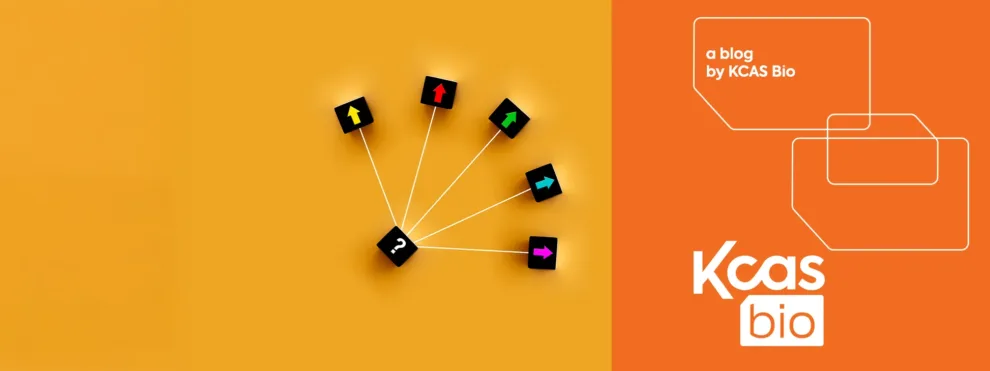What Are Ligand Binding Assays (LBAs)?
Ligand binding assays (LBAs) have been our core activity for decades. LBAs are commonly used to measure interactions between two proteins, a ligand and its receptor, a monoclonal antibody (mAb) and its target, or a biologic and Anti-Drug Antibodies (ADA).
Applications of Ligand Binding Assays in Drug Development
Throughout the development of New Biological Entities (NBE), LBAs are primary tools to measure the levels (Pharmacokinetics, PK) and activity (Pharmacodynamics, PD), as well as the potential immunogenicity (ADA) of drug products. Circulating drug levels, measured by LBA, during Toxicokinetics (TK) and Pharmacokinetics (PK) studies, will help optimize therapeutic effect while limiting harmful effect of the therapeutic product. Quantification of soluble or cell-surface biomarkers will provide insights into the Pharmacodynamic (PD) or the target engagement of the therapeutic compound through notably Receptor Occupancy Assays (ROA).
Evolving Technologies in the LBA Landscape
Over the years, the LBA landscape has substantially changed with the boom of immunotherapy. This came with the development of more and more sophisticated tools, such as multiplexing technologies in the early 2000s for measuring soluble biomarkers, and more recently, high-content flow cytometry for cellular biomarkers, and ultrasensitive platforms, the utility of which was proven specifically in the field of neuropathologies1. For instance, highly sensitive Simoa® technology was the first to allow for the detection, in blood, of neurological proteins, present at very low concentrations and reflecting, for some of them, ongoing pathological processes in the brain2. This has been game-changing in the field of neuroinflammation & neurodegeneration, allowing for easy monitoring of disease progression or treatment interventions.
Novel technologies such as NULISATM combine ultrasensitivity and targeted proteomics, allowing for the identification of disease or treatment-specific patterns3.
Our Technological Capabilities: Matching Solutions to Your Needs
Different LBA platforms can be used depending on the assay format, the biological matrix, the nature of the biomarker, and the required sensitivity. We offer one of the largest immuno-assay and cell-based assay technological parks. It allows us to provide the solution that best fits the project’s specifications and Context of Use (CoU), including the number of parameters, expected levels, sample volumes, turnaround time and throughput, as well as study duration.
One of the largest immunoassay technological parks :
For soluble biomarker analysis:
- Multimode readers for classical ELISA : Infinite® 200 and SpectraMax® instruments
- Bioplex 200 instruments
- Ella™ Automated Immunoassay System
- SMCxPRO™ Immunoassay System
- Meso Scale Discovery® (MSD) SQ-120 and S600 instruments
- Simoa® HD-X™ analyzer
- Lumipulse®
- ARGO™ HT/ NULISATM proteomics platform
For cellular biomarker analysis
- ImmunoSpot® ELISpot reader
- NovoCyte Quanteon™ flow cytometer
- BD LSR Fortessa™ flow cytometer
- Cytek aurora Spectral flow cytometer
Alternative Approaches: Hybrid LC-MS/MS for Protein Quantification
Moreover, as a global CRO, we offer alternatives for protein quantification and pharmacokinetics, such as hybrid LC-MS/MS (Liquid Chromatography Mass Spectrometry) in our Kansas City site. Our SCIEX 7500+ and HRMS Orbitrap systems offer exceptional sensitivity, dynamic range, and throughput to support challenging large molecule and biomarker analyses. This alternative is specifically adapted to the early stages of (pre)clinical development, at the time of lead selection, when specific reagents for each drug candidate are not readily available.
Key Takeaways
With our deep experience in LBA, our large technological park, our highly trained & fully engaged personnel, and the large panel of approaches, we work hand-in-hand with our clients to develop LBA methods – from the early discovery stage to their clinical studies. We act as an extension of their own lab, moving from CRO (Contract Research Organization) to PRO (Partner Research Organization). Through this very close partnership, highly productive discussions, and invaluable knowledge sharing with our worldwide clients, we are ready to provide you with tailor-made solutions.
- Fischer SK, Joyce A, Spengler M, Yang TY, Zhuang Y, Fjording MS, Mikulskis A. Emerging technologies to increase ligand binding assay sensitivity. AAPS J. 2015 Jan;17(1):93-101. doi: 10.1208/s12248-014-9682-8. Epub 2014 Oct 18. PMID: 25331105; PMCID: PMC4287293.
- Kuhle J, Barro C, Andreasson U, Derfuss T, Lindberg R, Sandelius Å, Liman V, Norgren N, Blennow K, Zetterberg H. Comparison of three analytical platforms for quantification of the neurofilament light chain in blood samples: ELISA, electrochemiluminescence immunoassay and Simoa. Clin Chem Lab Med. 2016 Oct 1;54(10):1655-61. doi: 10.1515/cclm-2015-1195. PMID: 27071153.
- Durcan R, Heslegrave A, Swann P, et al. Novel blood-based proteomic signatures across multiple neurodegenerative diseases. Alzheimers Dement. 2025;21(3):e70116. doi:10.1002/alz.70116

